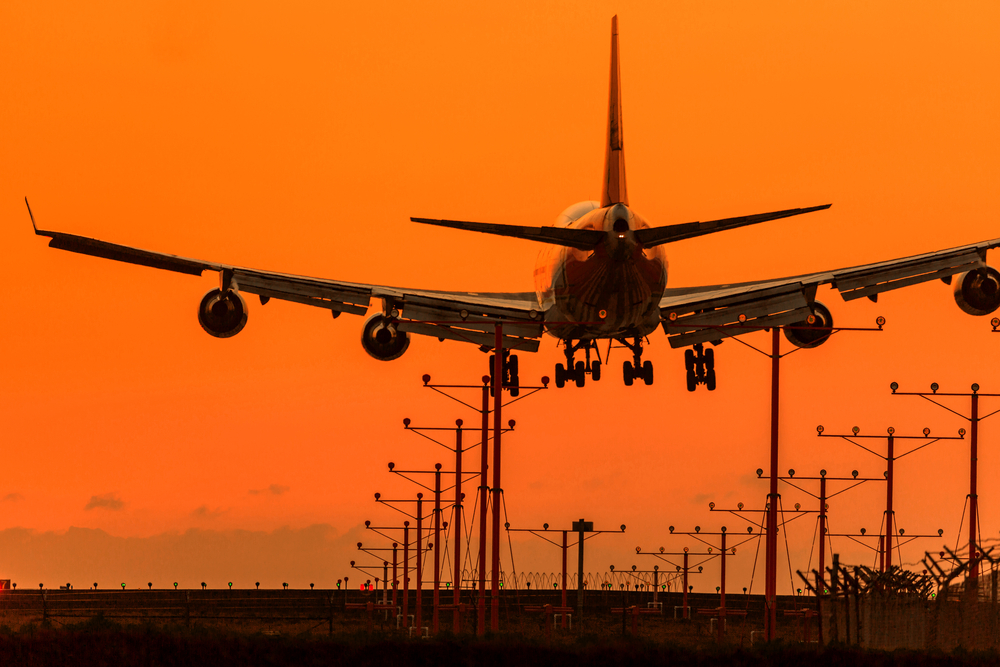Twelve states and a coalition of environmental groups are fighting the EPA over lax greenhouse gas (GHG) emissions standards for airlines in two different lawsuits at the D.C. Circuit Court of Appeals.
Both suits petition the D.C. Circuit Court to review the final action by the EPA entitled “Control of Air Pollution from Airplanes and Airplane Engines: GHG Emission Standards and Test Procedures.”
The rule, known as the Airplane Rule, was finalized in January 2021, just as the Trump administration was leaving office.
The multistate lawsuit, State of California, et al. v. EPA, led by California Attorney General Xavier Becerra and the California Air Resources Board (CARB), contends that the Airplane Rule:
- Fails to reduce emissions at all beyond business as usual
- Lags existing technology by a decade
- Excludes from consideration more effective alternatives
The environmental groups’ lawsuit, Center for Biological Diversity, Friends of the Earth and Sierra Club v. EPA, echoes the same concerns.
The rule adopted the existing International Civil Aviation Organization (ICAO) standards. It noted that technologies to meet those standards have already been developed by U.S. manufacturers and concluded: “For these reasons, the EPA is not projecting emission reductions associated with these proposed GHG regulations.”
“EPA’s key rationale for adopting the ICAO standards was a policy decision—’aligning domestic standards with the ICAO standards, rather than adopting more stringent standards, will have substantial benefits for future international cooperation on airplane emission standards, and such cooperation is the key for achieving worldwide emission reductions,’” says an article published by the American Bar Association.
“Given the long lead time necessary for manufacturers to develop new aircraft designs, the EPA’s final rule would effectively lock in meaningless standards for years — as the climate emergency grows increasingly dire. … [T]he coalition argues that the rule is arbitrary, capricious, and contrary to law,” states the California attorney general’s press release.
Aviation emissions contribute 2.4% of all carbon dioxide emissions globally, and the United States is responsible for 25% of that total. Projected growth in the industry shows aircraft GHG emissions are expected to grow 43% in the next 20 years and are expected to triple by 2050 without regulation.
“This standard [established by the Airplane Rule] fails to reduce emissions from aircraft and represents a missed opportunity to address climate change,” said Sarah Burt, deputy managing attorney of Earthjustice’s International Program, in a Center for Biological Diversity press release. “The [Clean Air Act (CAA)] clearly establishes an obligation to reduce emissions of harmful pollutants that endanger public health and welfare. Our petition asks the D.C. Circuit to hold EPA to this obligation to work toward a future where our transportation systems no longer contribute to a warming world.”
The ICAO standard was introduced in 2017, and industry analysts characterized it as “weak” because it basically maintains the status quo rather than driving innovation.
“ICAO’s carbon dioxide emissions certification standard, which varies by aircraft fuselage and is based on the aircraft’s performance during the cruise phase, applies to new designs starting in 2020, and existing aircraft designs in 2023, but compliance doesn’t begin until 2028,” reports IHS Markit. “The International Council on Clean Transportation said ICAO’s 10% fuel efficiency standard is no more aggressive than efficiency levels manufacturers were likely to meet without the standard in place.”
Section 231 of the CAA requires the EPA to issue emissions standards for aircraft engines based on the engines’ contributions to GHG emissions and the available technology to control those emissions.
“[T]he EPA has not even considered any form of emission control that would reduce GHGs, despite its determination that these emissions endanger public health and the environment,” said Becerra’s press release. “The EPA also failed to consider the co-benefits of GHG regulation, and the environmental justice impacts of pollution from aircrafts. Aircrafts emit particulate matter, nitrogen oxides, and hazardous air pollutants. Residents living within 10 miles of airports — which disproportionately include disadvantaged minority and low-income communities — are exposed to large amounts of these harmful pollutants through emissions from aircraft landing and takeoff operations.”
The multistate lawsuit is joined by the attorneys general of Connecticut, Illinois, Maryland, Massachusetts, Minnesota, New Jersey, New York, Oregon, Pennsylvania, Vermont, Washington, and the District of Columbia.
The Biden administration has defended the rule to date and “recognizes more action is necessary across the transportation sector and in the aviation sector specifically to significantly reduce GHG emissions,” says a statement on the litigation published by the EPA. “That is why the U.S. will press for ambitious new international CO2 standards at the upcoming round of ICAO negotiations, why in September the Biden Administration announced a series of actions aimed at boosting the development of sustainable aviation fuel, and why earlier this month the Biden Administration released the U.S. Aviation Climate Action Plan at COP26.”
The “EPA also recognizes that we have [CAA] authority independent of the standards to be negotiated at ICAO to set emissions standards for commercial aircraft, and we will be evaluating what opportunities for greater regulatory ambition exist through the commonsense exercise of our [CAA] authority.”

